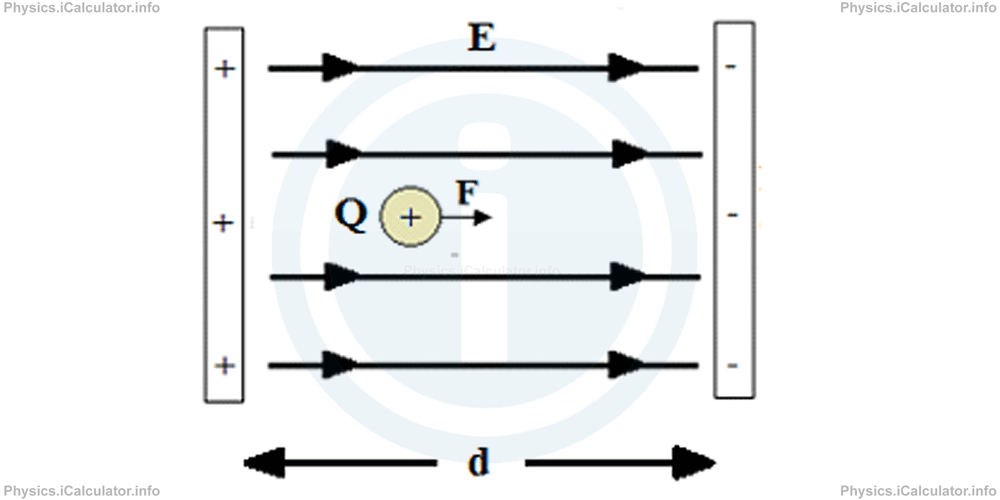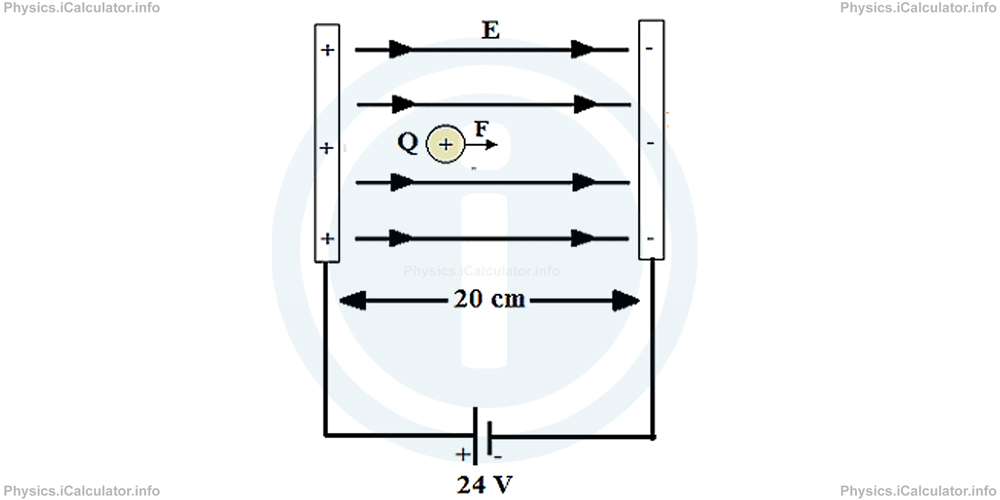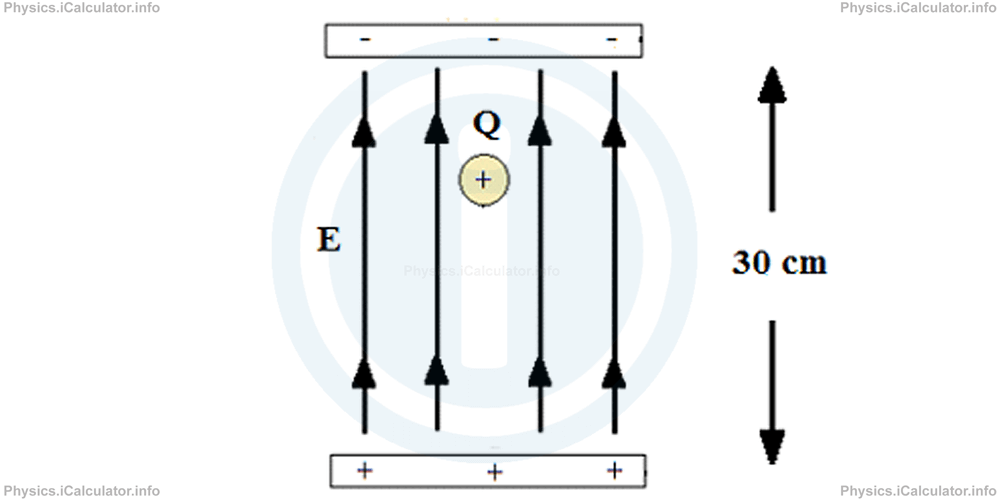Menu
Physics Lesson 14.5.8 - Motion of Charged Particles inside a Uniform Field
Please provide a rating, it takes seconds and helps us to keep this resource free for all to use
Welcome to our Physics lesson on Motion of Charged Particles inside a Uniform Field, this is the eighth lesson of our suite of physics lessons covering the topic of Electric Potential, you can find links to the other lessons within this tutorial and access additional physics learning resources below this lesson.
Motion of Charged Particles inside a Uniform Field
An electric charge Q experiences an electric force Fe when it is inserted inside an electric field. As a result, it experiences an acceleration a, which based on the Newton's Second Law is
where m is the mass of the charged particle.
If the charge is too small, the effect of gravity is not taken into account, so the charge will move linearly, in the direction of electric field as shown in the figure.

Given that Fe = Q × E, we can write for the acceleration caused by the electric force
Example 7
A proton starts moving from the positive towards the negative plate of a system composed by two parallel metal plates charged oppositely as those shown in the figure above. What is the velocity by which the proton collides with the negative plate if the distance between the plates is 20 cm? Take the mass of proton mp = 1.67 × 10-27 kg and the charge of electron Q = 1.6 × 10-19 C.

Solution 8
First, we must calculate the electric field E between the plates. We have
= 24 V/0.2 m
= 120 V/m
= 120 N/C
Now, let's calculate the acceleration caused by the electric force on the proton. We have
= 1.6 × 10-19 C × 120 N/C/1.67 × 10-27 kg
= 1.15 × 1010 m/s2
Therefore, using the kinematic formula
we find after substitutions for the speed v by which the proton hits the negative plate:
= √2 × 1.15 × 1010 × 0.2
= √0.46 × 1010
= 6.78 × 104 m/s
In some cases, especially when the charged object is quite heavy, the gravitational force cannot be neglected. As a result, there is a combination of two forces, electric and gravitational, which determine the trajectory of the charge moving inside a uniform field. Let's consider an example in this regard.
Example 9
A 2 g metal sphere carrying a charge of 40 μC is inserted inside a uniform electric field as shown in the figure.

What is the potential difference between the plates if the charge remains stationary in the position shown? Take g = 9.81 N/kg.
Solution 9
Since there is equilibrium, we have
m × g = Q × E
m × g = Q × ∆V/d
Thus,
= 2 × 10-3 kg × 9.81 N/kg × 0.3 m/4 × 10-5 C
= 147.15 V
You have reached the end of Physics lesson 14.5.8 Motion of Charged Particles inside a Uniform Field. There are 8 lessons in this physics tutorial covering Electric Potential, you can access all the lessons from this tutorial below.
More Electric Potential Lessons and Learning Resources
Whats next?
Enjoy the "Motion of Charged Particles inside a Uniform Field" physics lesson? People who liked the "Electric Potential lesson found the following resources useful:
- Charged Particles Feedback. Helps other - Leave a rating for this charged particles (see below)
- Electrostatics Physics tutorial: Electric Potential. Read the Electric Potential physics tutorial and build your physics knowledge of Electrostatics
- Electrostatics Revision Notes: Electric Potential. Print the notes so you can revise the key points covered in the physics tutorial for Electric Potential
- Electrostatics Practice Questions: Electric Potential. Test and improve your knowledge of Electric Potential with example questins and answers
- Check your calculations for Electrostatics questions with our excellent Electrostatics calculators which contain full equations and calculations clearly displayed line by line. See the Electrostatics Calculators by iCalculator™ below.
- Continuing learning electrostatics - read our next physics tutorial: Electric Flux. Gauss Law
Help others Learning Physics just like you
Please provide a rating, it takes seconds and helps us to keep this resource free for all to use
We hope you found this Physics lesson "Electric Potential" useful. If you did it would be great if you could spare the time to rate this physics lesson (simply click on the number of stars that match your assessment of this physics learning aide) and/or share on social media, this helps us identify popular tutorials and calculators and expand our free learning resources to support our users around the world have free access to expand their knowledge of physics and other disciplines.